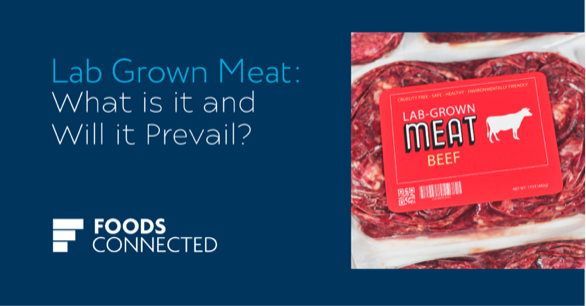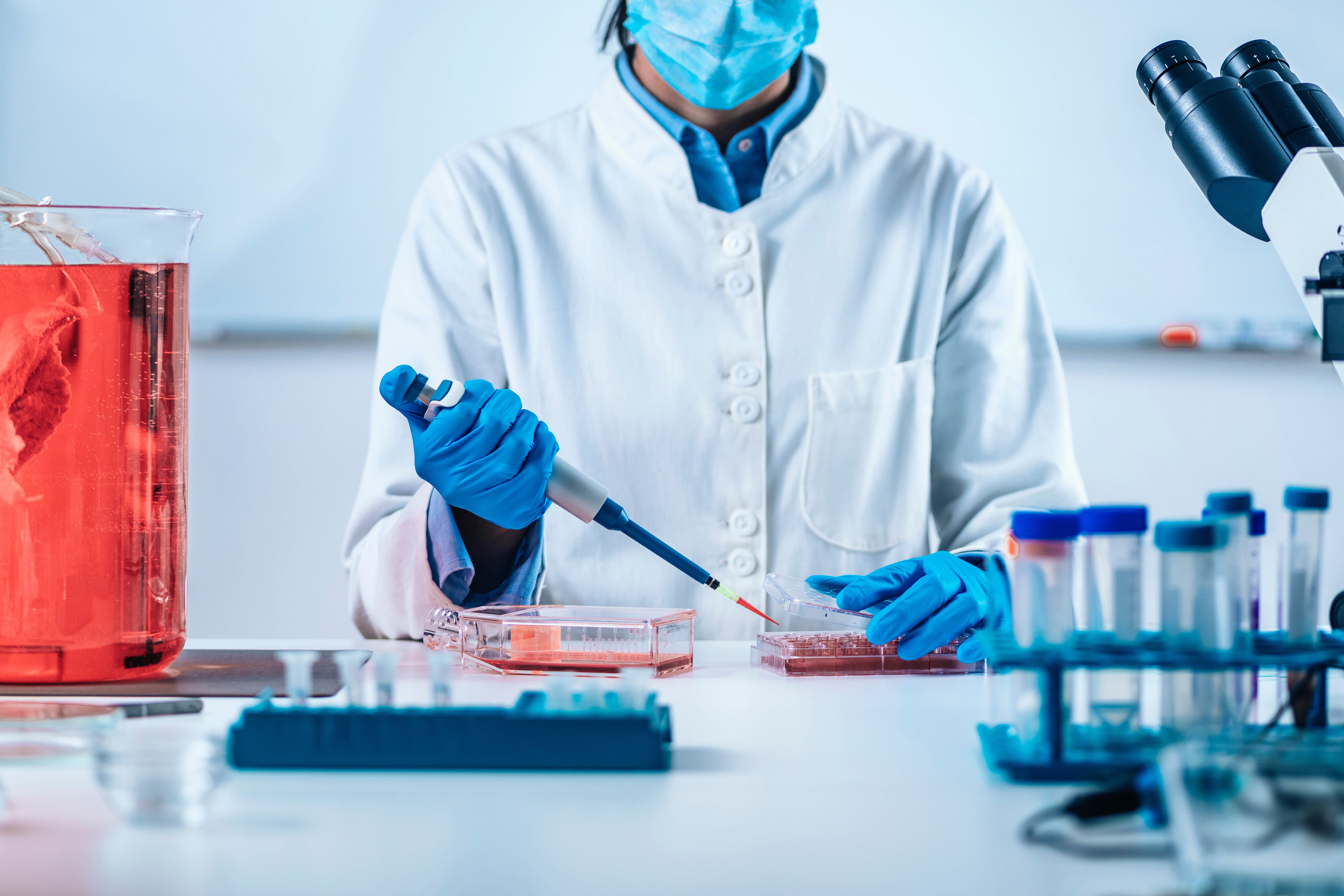
While lab-grown meat may have just come to market, the idea has existed for decades. The man most commonly credited for creating cultivated meat is Dutch researcher and (former World War II prisoner) William van Eelen.
His daughter, Ira, co-founded Kind Earth Tech, a non-profit that helps accelerate the new protein industry. Ira van Eelen also served as an advisor for Eat Just, the first company to receive regulatory approval for the sale of lab-grown meat.
It’s a full-circle moment — and a revolutionary one for sustainable eating.
What is lab-grown meat?

Also called cell-based or cultured meat, lab-grown meat is an alternative to conventional meat that avoids the slaughter of living animals for food production. More than 70 companies globally are focused on developing cell-based versions of meat products like beef, chicken, pork, horse, lamb and various types of seafood. The cultivated meat industry has grown exponentially in the last few years, with investment growing sixfold between 2019 and 2020.
There has been an increased focus on food safety issues with supply chains, labour and meat processing plants since the start of the Covid-19 pandemic. This has coincided with a dietary shift towards a more sustainable food system, with a focus on reducing greenhouse gas emissions. Lab-grown meat, although not classed vegan since it uses animal cells and not plant-based products, is being touted as a product perfect for those following flexitarian diets and exploring alternatives to mass animal agriculture.
And there is certainly interest. As recently as January, for example, the UK’s Food Standards Agency (FSA) unveiled research that showed a third of British consumers are willing to try cultivated meat.
The US Centers for Disease Control and Prevention estimates that pathogens in traditional meat are the most common food source for fatal infections. In the FSA report, 70% of respondents believed plant-based meat to be safe, but only 30% said the same for cultured meat. With food safety a major industry trend for 2022, it is perhaps unsurprising that 27% of people currently unwilling to try lab-grown meat in the FSA report could be persuaded otherwise if they knew it was safe to eat.
How lab-based meat is made and the food safety considerations
As the name suggests, such meat is made in a lab using animal cells and a cultured growth medium. While the cultured medium could be a mix of sugars and salts, fetal bovine serum is the more standard (and traditional) option. It aids cell survival, which is essential for lab-grown meat as it is produced using bovine cells that grow in a petri dish.
But this has its limitations, as costs pile up and proliferation dries up. Certain companies use bioreactors that can create “immortal” cell lines, utilising scaffold-based systems that enable the cells to proliferate infinitely. Manufacturers have been using cultured stem cells as an alternative to animal muscle cells, which have the ability to multiply exponentially and scale up production.
When it comes to food safety, contamination is always a key concern. As lab-grown meat cells don’t have fully functioning immune systems, there is a risk of fungal growth, bacteria and human pathogens. However, one possible solution would be the use of antibiotics to control pathogens, and although an effective remedy, this would likely invite stricter regulation and testing.
Many companies say that, by using bioreactors and tanks in an industrial setting rather than a lab, safety supervision would also be tighter. Existing preventative measures in production facilities are also believed to preserve sterile boundaries and avoid the use of antibiotics.
As with traditional meat, lab-grown meat makers will need to implement processes for the safe disposal of toxins from their processing plants, including from bioreactors, scaffoldings, growth cultures and antimicrobials.
Ensuring a safe future for lab-grown meat

Cultured meat companies must be fully transparent about the ingredients they use, especially when it comes to the scaffold-based system, antibiotics and antimicrobials, and growth factors. This would need to be complemented with rigorous testing by independent regulatory bodies, because cell-cultured meat is, in general, a complicated product and needs thorough reviews.
If lab-grown meat is to become feasible for mass consumption and penetrate regular grocery stores, it would need the largest version of tissue engineering to ever exist. It could potentially introduce new kinds of genetically engineered cells into our diets and bodies and therefore, would warrant further research about its safety for consumption.
Proper labelling is a must for a safe future for cell-based meat. This should ideally cover four broad areas: the presence of genetically modified ingredients, or unmodified animal cells; the introduction of any new allergens during production; safety levels of any hormones or antibiotics used; and the absence of oncogenic cells or unapproved compounds.
While lab-grown meat is still very much in its infancy, it has tremendous potential. With technological advancements, universal access, and its environmental advantages, cultured meat’s future looks highly promising. But for it to reach the scale required for mass consumption, meticulous testing, continuous supervision, and strict regulation are non-negotiables.
Natalie Thorpe
A graduate of Letterkenny Institute of Technology, Natalie studied Visual Communication and Graphic Design. When she's not creating up new designs for company materials and branding, writing, compiling marketing plans or implementing new UX strategies, you'll find her roaming a deserted beach in search of her disappearing dog, or soaking up different cultures on her globetrotting adventures!
Stay up to date
Stay up to date
Browse Posts
- December 2025
- November 2025
- October 2025
- September 2025
- August 2025
- July 2025
- June 2025
- May 2025
- April 2025
- March 2025
- February 2025
- January 2025
- December 2024
- November 2024
- October 2024
- September 2024
- August 2024
- July 2024
- June 2024
- May 2024
- April 2024
- March 2024
- February 2024
- January 2024
- December 2023
- November 2023
- October 2023
- September 2023
- August 2023
- July 2023
- June 2023
- May 2023
- April 2023
- March 2023
- December 2022
- November 2022
- October 2022
- September 2022
- August 2022
- July 2022
- June 2022
- May 2022
- April 2022
- March 2022
- February 2022
- January 2022
- December 2021
- November 2021
- October 2021
- August 2021

/Blog%20Headers/shutterstock_1927957907%20(1).jpg)
/Blog%20Headers/shutterstock_1845178195%20(2).jpg)
/Blog%20Headers/shutterstock_2133827717%20(1).jpg)
/Blog%20Headers/shutterstock_2473376713.jpg)
/Blog%20Headers/shutterstock_2247276303.jpg)
.png)
.png)




/Blog%20Headers/Blog%20Header_IWD%202025.png)
/Blog%20Headers/Analysis%20Why%20beef%20prices%20are%20at%20record%20highs.jpg)
/Blog%20Headers/SEO_How%20meat%20processors%20can%20optimise.jpg)
.png)
.png)
/Blog%20Headers/Allergen%20Management-3%20key%20ways.jpg)
/Blog%20Headers/Headshot%20B%26W.jpg)
/Blog%20Headers/Red%20Sea%20supply%20chain%20disruptions%20how%20they%20affect%20the%20food%20industry%20and%20what%20to%20do%20to%20protect%20your%20businessjpg.jpg)
/Blog%20Headers/shutterstock_1550290670.jpg)